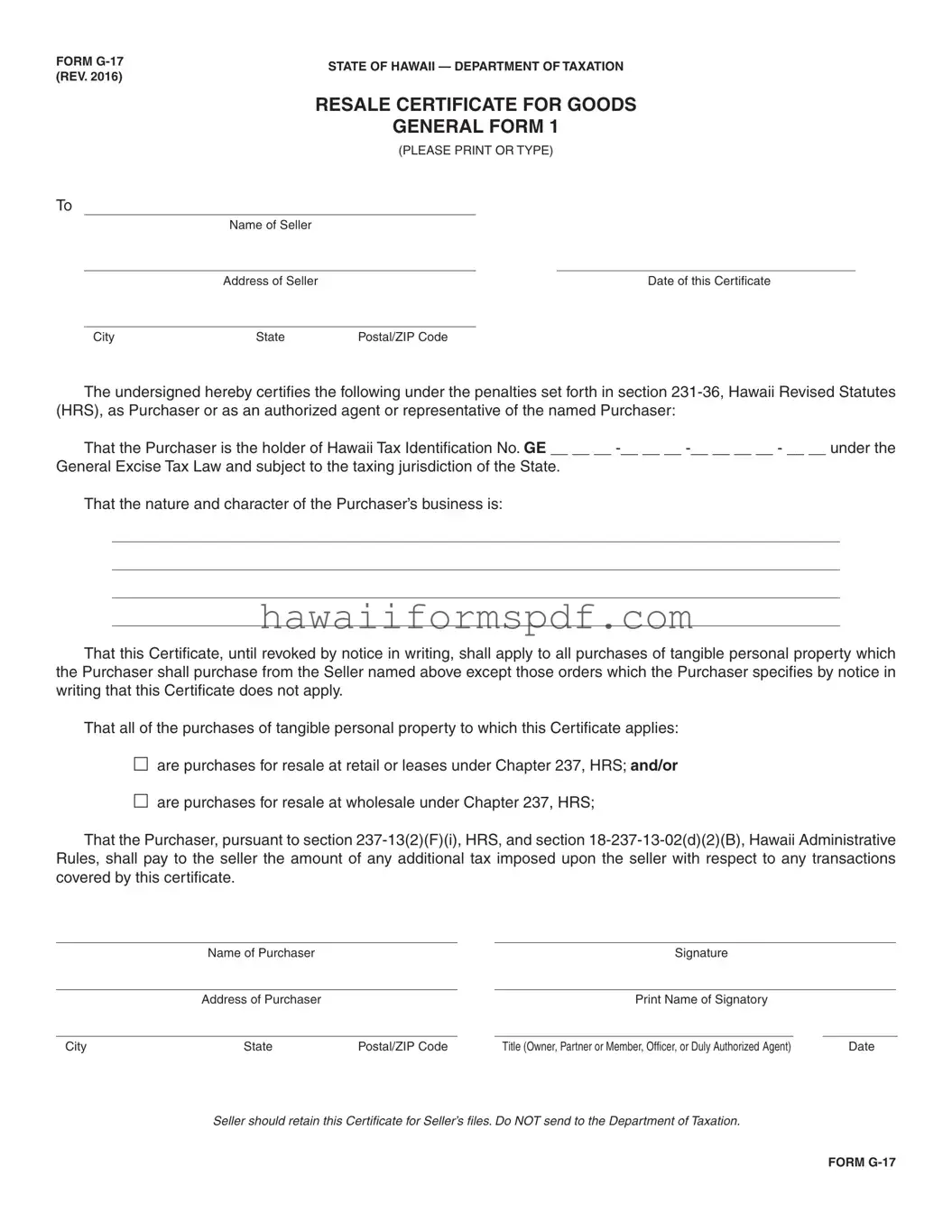
|
FORM G-17 |
STATE OF HAWAII — DEPARTMENT OF TAXATION |
|
(REV. 2016) |
|
|
RESALE CERTIFICATE FOR GOODS
GENERAL FORM 1
(PLEASE PRINT OR TYPE)
To
Name of Seller
|
Address of Seller |
|
Date of this Certificate |
|
|
|
|
City |
State |
Postal/ZIP Code |
The undersigned hereby certifies the following under the penalties set forth in section 231-36, Hawaii Revised Statutes (HRS), as Purchaser or as an authorized agent or representative of the named Purchaser:
That the Purchaser is the holder of Hawaii Tax Identification No. GE __ __ __ -__ __ __ -__ __ __ __ - __ __ under the General Excise Tax Law and subject to the taxing jurisdiction of the State.
That the nature and character of the Purchaser’s business is:
That this Certificate, until revoked by notice in writing, shall apply to all purchases of tangible personal property which the Purchaser shall purchase from the Seller named above except those orders which the Purchaser specifies by notice in writing that this Certificate does not apply.
That all of the purchases of tangible personal property to which this Certificate applies:
are purchases for resale at retail or leases under Chapter 237, HRS; AND/OR
are purchases for resale at wholesale under Chapter 237, HRS;
That the Purchaser, pursuant to section 237-13(2)(F)(i), HRS, and section 18-237-13-02(d)(2)(B), Hawaii Administrative Rules, shall pay to the seller the amount of any additional tax imposed upon the seller with respect to any transactions covered by this certificate.
|
Name of Purchaser |
|
|
Signature |
|
|
|
|
|
|
|
|
|
|
|
|
Address of Purchaser |
|
|
Print Name of Signatory |
|
|
|
|
|
|
|
|
|
|
|
City |
State |
Postal/ZIP Code |
|
Title (Owner, Partner or Member, Officer, or Duly Authorized Agent) |
|
Date |
|
Seller should retain this Certificate for Seller’s files. Do NOT send to the Department of Taxation.

